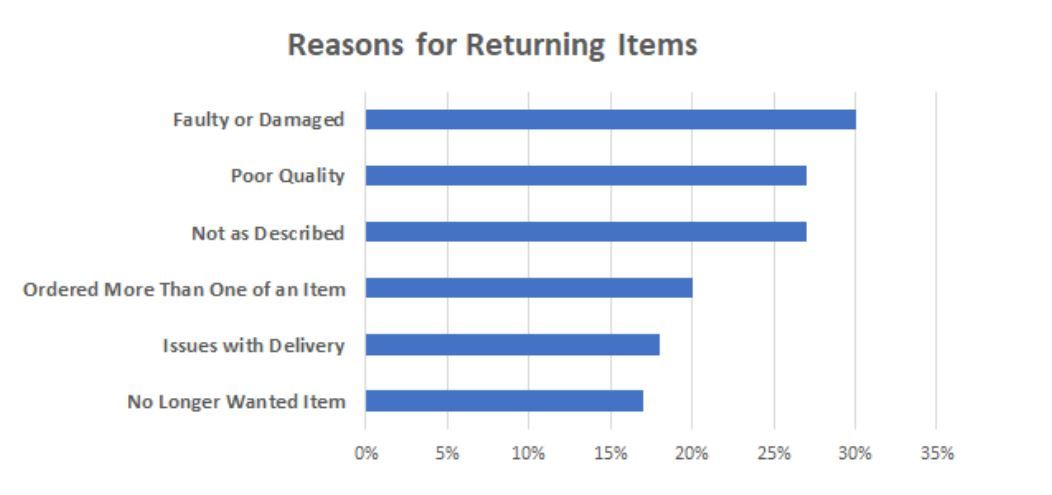“Many happy returns” is an old saying used by some during this time of year. But, for those in the business of selling online or offline, there is another kind of return that is not so happy.
According to the UPS Pulse of the Online Shopper Report, 36% of online shoppers had returned at least one product in the three months prior to the study. And during and after the holidays, it’s even more common. UPS anticipated 1.6 million product returns per day in the week leading up to Christmas 2019 and expects a peak of 1.9 million product returns on January 2, 2020.
According to the UPS Online Shopper Report, the reasons consumers return items are primarily with “issues of quality, transparency, or delivery.”


But, according to Narvar, 96% of customers that are happy with the returns experience will shop with that retailer again. So, it’s important to get this right. The same study shows that “getting it right” means making the returns process quick and easy and frequently updating the status of the return and associated refund.
At Rithum, we work with a lot of apparel brands and retailers. For apparel, the pain of product returns is particularly acute. According to eMarketer, quoting a study done by Radial in late 2018, approximately 41% of online buyers were apprehensive about purchasing apparel online due to the returns process. And when they do purchase, return rates are relatively high; as high as 30% to 50%, depending on the estimate. This creates a lot of cost, waste, and negative environmental impact.
So, while studies make it clear that a good returns process is good for repeat business from customers, preventing returns, to begin with, should be the ultimate objective. With apparel specifically, product fit is often a primary culprit, assuming none of the quality issues identified in the chart above. The Wall Street Journal had a good article last week (paid subscription may be required) on the confusing nature of clothing sizes and the difficulty brands and retailers have with creating size charts, given the diversity of body shapes that we all have and the desire to have different styles fit, well, differently. The article highlights applications such as 3D body scans that could significantly change the way clothing is designed and sized in the not-too-distant future.
If you’re in the apparel business, the lessons from all of this include creating customer-friendly returns processes now while keeping an eye on emerging technologies that will help minimize returns in the future.
Happy Holidays everyone…and many happy returns.

